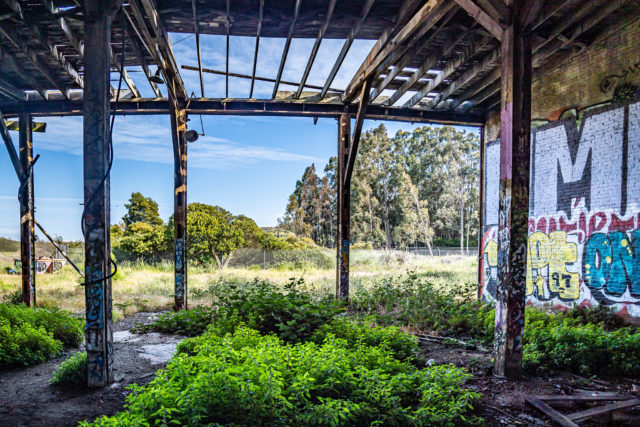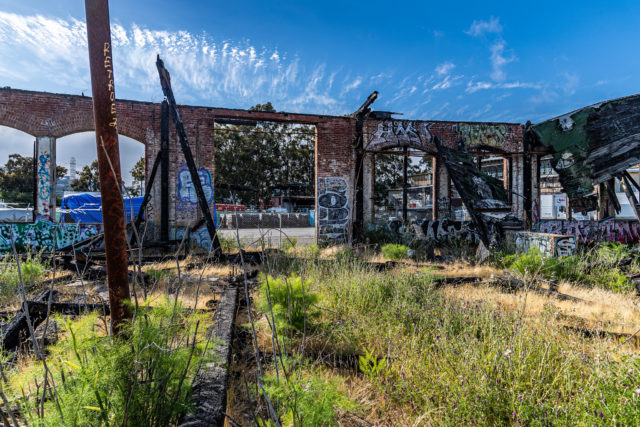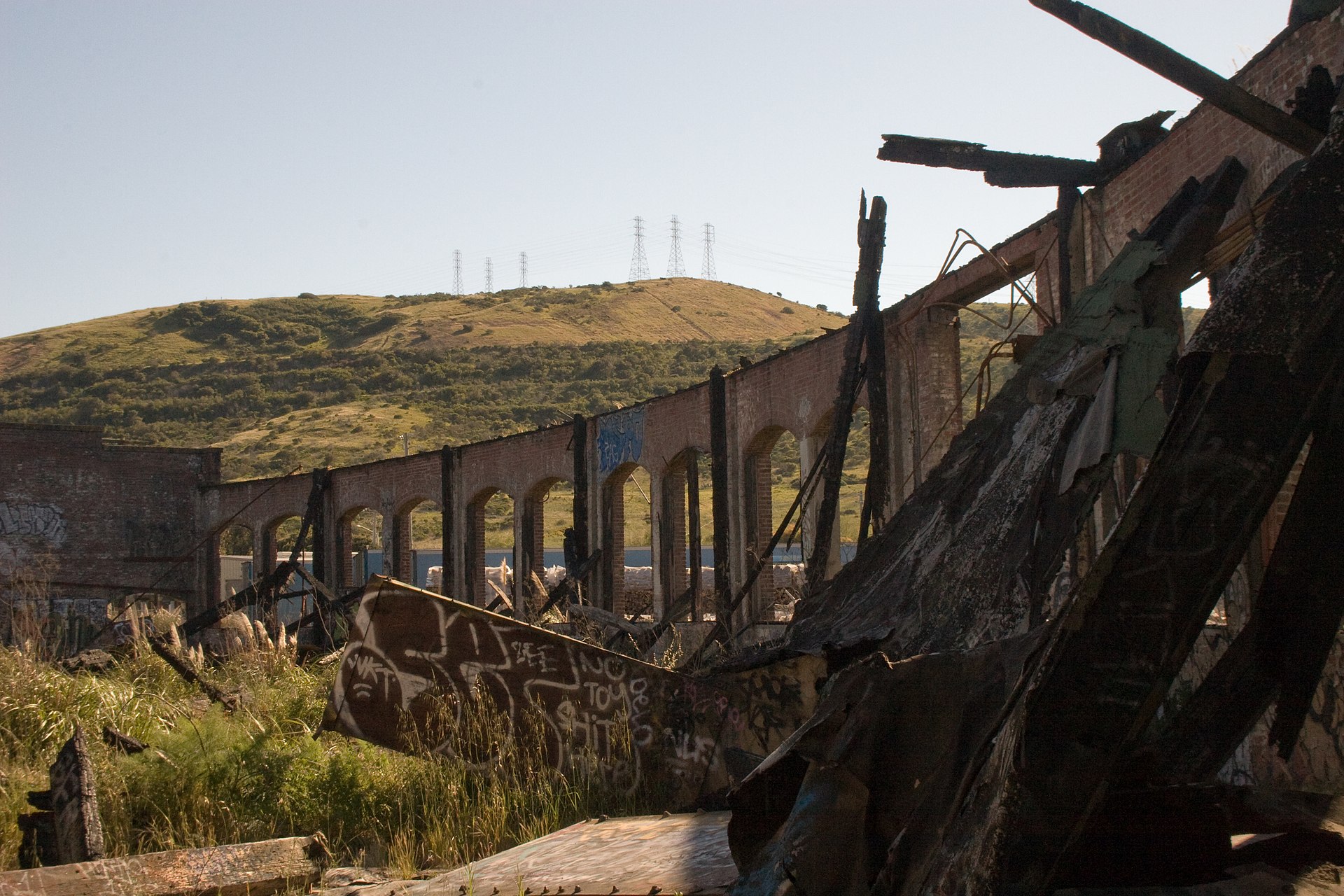The Bayshore Roundhouse was constructed by Southern Pacific and was a junction on the railway line running between San Francisco and San Bruno in the early 1900s. To build this section of track, it was necessary for Southern Pacific to build five tunnels, and the earth they excavated was used to construct the Bayshore Railyard.
The Roundhouse was built between 1907 and 1910, making it one of the first buildings to be constructed in the new railyard. At that time, there were more than two hundred roundhouses in California. The Bayshore Roundhouse serviced freight engines, while the smaller passenger engines were serviced at Mission Bay Roundhouse.


The Roundhouse contained a turntable, a feature which was essential when servicing steam engines because they are best driven in one direction: forward. While they can be put in reverse, they must be driven at a much lower speed and should not be operated that way for very long.
A train would be driven into the roundhouse, have work done on it, then the turntable would revolve beneath it so it could drive back out the way it came in. The turntable at Bayshore started out with a diameter of 80 feet, but it was enlarged to 110 feet in 1941 so that the Roundhouse could service the largest engines running on the South Pacific.

Steam engines require a decent amount of maintenance. Over time, the railway facility at Bayshore was expanded until, at one point, it had 39 tracks coming in and 25 tracks going out. It is recorded that, in October 1921, as many as 41,918 trains were handed by the Bayshore yard.
The Bayshore Roundhouse had 40 stalls for steam engines, with 24 being outside and 17 inside and covered by the roof. At its peak, there were more than 3,000 people working at the Roundhouse. As a result, a separate hospital was built specifically for employees.

Unfortunately, in the 1950s, when diesel engines began to appear, the Bayshore Railyard began to suffer. Diesel engines required much less maintenance than the steam engines. Because they could travel in either direction, they also didn’t need turntables. As a result, many roundhouses became obsolete.
The Bayshore Roundhouse avoided closure, but after 1958, it ceased being used for its original purpose of servicing steam engines. Instead, until October 1982, the roundhouse was used for storing diesel trains.

Despite its continued use, the facility began to fall into disrepair. Eventually, the Bayshore Roundhouse was officially closed on October 25, 1982. Most of the buildings were demolished, and the rails were removed. The site was regularly visited by graffiti artists.
The roundhouse itself was left standing but abandoned. Unfortunately, a fire in October 2001 destroyed much of the roof. Out of the 200 roundhouses that existed in California at one time, only a few remain today. The Bayhouse Roundhouse is the last one made of brick, which is why it was listed on the National Register of Historic Places in 2010.

The land was sold in 1989 to the company Tuntex, now known as Universal Paragon. After that, there were various proposals put forward to develop the Brisbane Baylands, an area of 660 acres which includes a landfill as well as the railway yard.
However, due to its past use, the land has various contamination issues and no plans have yet been approved by the Brisbane city council. The proposal currently being considered, if approved, would not see construction starting until at least 2028.

Some of the buildings on the Bayshore site are still used today. Lazzari Fuel leases the tank and boiler shop as storage for its charcoal, while the ice house is now leased by the Machinery and Equipment Company of Brisbane.
Jim Maurer is the owner of these photographs of the abandoned Bayshore Roundhouse. He had a chance to visit this place and capture it in such bright, beautiful photos. Thank you to him for giving us permission to use them in this article. Follow his Flickr account if you want to keep updated about his work.
If you’ve enjoyed reading about the Bayshore Roundhouse and its place in American history, then check out another of our articles about the Pankow-Heinersdorf railyard that forms an equally important piece of German history.






















Another Article From Us: The Abandoned German Railyard

Another Article From

